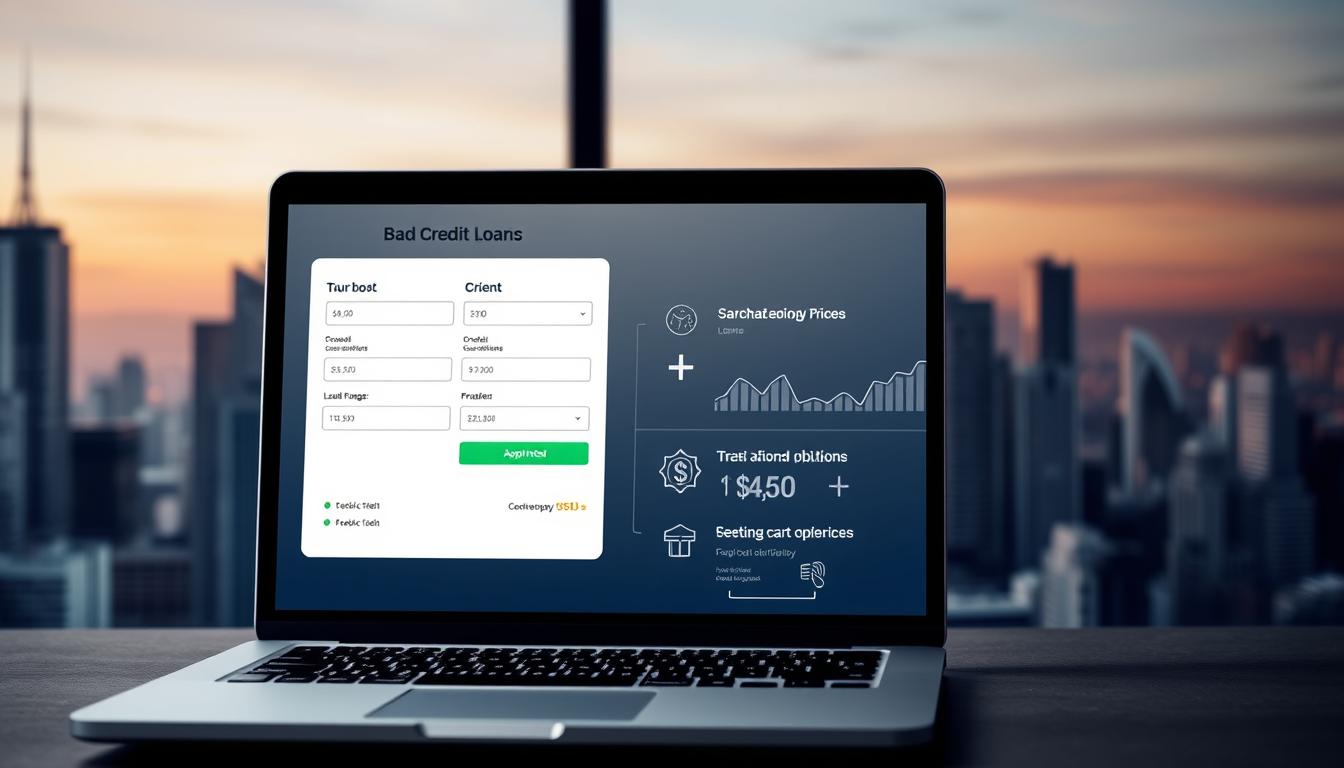Affordable Home Loans for Your Dream Home
Did you know thousands in Florida own a home every year? It’s thanks to affordable mortgage options.
At Home Financing Center, we make homeownership possible for all. We offer affordable home loans that match your financial needs. You get competitive interest rates and flexible terms.
Owning a home is a big deal. Our mortgage loans help make it happen for first-time buyers and others.
Key Takeaways
- Affordable mortgage options available for individuals with varying financial capabilities
- Competitive interest rates and flexible terms for home loans
- Tailored solutions for first-time homebuyers
- Home Financing Center offers affordable home loans in Florida
- Accessible homeownership through customized mortgage loans
Understanding Home Loans: What You Need to Know
Understanding home loans is key when buying a home. Knowing what home loans are can help you make better choices.
What Is a Home Loan?
A home loan, or mortgage, lets you borrow money to buy a home. You agree to make regular payments, which cover interest and part of the loan.
Key aspects of a home loan include the loan amount, interest rate, repayment term, and type of mortgage. Knowing these helps you pick the right loan for you.
Types of Home Loans Available
There are many home loans for different needs. Here are a few common ones:
- FHA Loans: These are insured by the Federal Housing Administration. They’re great for first-time buyers because you can put down less money.
- VA Loans: These are for veterans, active-duty military, and spouses. They have good terms, like lower interest rates and no down payment.
- Conventional Loans: These loans aren’t insured by the government. They usually need a bigger down payment and have stricter credit score rules.
Wells Fargo says it’s important to know about these loans. It helps you choose the best one for you.
Fixed-Rate vs. Adjustable-Rate Mortgages
Choosing between a fixed-rate or adjustable-rate mortgage is a big decision.
| Feature | Fixed-Rate Mortgage | Adjustable-Rate Mortgage |
|---|---|---|
| Interest Rate | Remains the same throughout the loan term | Can change periodically based on market conditions |
| Monthly Payments | Predictable and consistent | Can increase or decrease with interest rate changes |
| Risk Level | Lower risk, as payments are stable | Higher risk, due to potential rate increases |
Knowing the differences between fixed-rate and adjustable-rate mortgages helps you choose wisely. It depends on your financial situation and how much risk you’re willing to take.
Key Factors That Affect Home Loan Eligibility
Knowing what affects home loan eligibility is key for those looking to buy a home. Lenders look at many parts of a person’s financial life. They check to see if the person can pay back the loan.
Credit Score Requirements
Lenders really look at your credit score. A high score means you’ve handled money well in the past. This makes it easier to get a home loan. Some lenders, like Chase, offer loans that are easier to get, even with lower scores.
Income and Employment Verification
Lenders also check your income and job to make sure you can pay back the loan. Banks like Wells Fargo think this is very important. If you have a steady job and income, you’re seen as a better candidate.
Debt-to-Income Ratios
The debt-to-income ratio is another big factor. It shows how much of your income goes to debt. A lower ratio means you can handle more debt, like a mortgage. Lenders use this to decide if they should lend to you.
By understanding and managing these key factors, you can make yourself a stronger candidate for a home loan. This can help you get closer to owning your dream home.
Steps to Apply for a Home Loan
Getting a home loan can seem tough, but it’s easier when you break it down. We’ll show you how to get a home loan step by step.
Pre-approval Process
The first step is getting pre-approved. You’ll talk to a lender, like Wells Fargo, and share your financial info. This shows how much they can lend you. Knowing your budget helps you find the right home.
Getting prequalified is the first step to see if you can get a mortgage. The Home Financing Center helps clients understand their options. It’s a big step towards buying a home.
Gathering Necessary Documents
To apply for a home loan, you need certain documents. These include proof of income, employment, credit reports, and ID. Having these ready makes the process faster.
A loan calculator can help you understand your financial commitment. It’s important to gather all needed documents to avoid delays.
Choosing the Right Lender
Finding the right lender is key. Compare rates and terms from different lenders, including mortgage brokers. They offer many loan options. Choosing wisely can save you money and stress.
Look at interest rates, fees, and customer service when picking a lender. A good lender can greatly improve your home buying experience.
By following these steps, you can confidently apply for a home loan. Whether it’s your first time or you’re refinancing, knowing what to do is crucial. It helps you make the best financial decisions.
Government-Backed Home Loan Programs
Exploring government-backed home loan options can change the game for those wanting to own a home. These programs make buying a home easier by offering good terms and lower risks for lenders.
FHA Loans and Their Benefits
FHA loans, insured by the Federal Housing Administration, are great for first-time homebuyers. They have lenient credit score requirements and lower down payments. Wells Fargo and Chase are top lenders for FHA loans.
Some benefits of FHA loans include:
- Lower down payment requirements
- More lenient credit score requirements
- Lower mortgage insurance premiums compared to other government-backed loans
VA Loans for Veterans
VA loans are guaranteed by the Department of Veterans Affairs. They offer big benefits to eligible veterans, active-duty personnel, and surviving spouses. These loans often have zero down payment requirements and competitive interest rates.
Key benefits of VA loans include:
- No down payment required
- Lower interest rates
- No private mortgage insurance (PMI) required
USDA Loans for Rural Development
USDA loans are backed by the United States Department of Agriculture. They aim to help people buy homes in rural areas. These loans offer favorable terms, including zero down payment options and lower mortgage insurance.
Here’s a comparison of the three government-backed home loan programs:
| Loan Program | Down Payment Requirement | Credit Score Requirement | Eligibility |
|---|---|---|---|
| FHA Loans | As low as 3.5% | 580+ | Anyone meeting FHA requirements |
| VA Loans | Zero down payment | 580+ (varies by lender) | Veterans, active-duty personnel, surviving spouses |
| USDA Loans | Zero down payment | 640+ | Homebuyers in rural areas |

Government-backed home loan programs offer many benefits. They make owning a home more possible for different groups. By knowing what each program offers, people can make better choices.
How to Compare Home Loan Offers
There are many home loan options out there. It’s important to know how to compare them well. This way, you can make a choice that fits your financial needs.
Understanding Interest Rates
The interest rate on your home loan is crucial. It affects your monthly payments and the loan’s total cost. Low-interest rates can save you a lot of money over time. It’s key to look at the interest rates from different lenders.
Wells Fargo, for example, offers competitive rates that might interest you. Interest rates can be fixed or adjustable. Fixed rates stay the same, while adjustable rates might start low but could go up.
Fees and Closing Costs
Fees and closing costs also play a big role in the loan’s total cost. These can include origination fees, appraisal fees, and title insurance. It’s important to know all the fees for each loan.
Some lenders might have lower rates but higher fees. Others might have higher rates but lower fees. Looking at the Annual Percentage Rate (APR) can help, as it includes both the rate and fees.
| Lender | Interest Rate | Origination Fee | APR |
|---|---|---|---|
| Wells Fargo | 3.75% | 0.5% | 3.9% |
| Bank of America | 3.8% | 0.75% | 4.0% |
| Quicken Loans | 3.7% | 0.25% | 3.8% |
Loan Terms and Conditions
It’s crucial to understand the loan terms and conditions. This includes the loan’s length, repayment terms, and any penalties for early payment. Home Financing Center stresses the importance of knowing these to avoid surprises.
For more help on comparing mortgage offers, check out Bankrate’s guide. It offers more tips for making a smart choice.
By looking at interest rates, fees, closing costs, and loan terms, you can make a choice that’s right for you. Whether you’re looking for a mortgage loan for a new home or to refinance your current one, comparing carefully is essential to get the best deal.
Tips for Improving Your Home Loan Rates
To cut down your mortgage costs, it’s key to work on getting a better home loan rate. A good rate can save you a lot of money over time. We’ll look at ways to help you get a better rate.
Boosting Your Credit Score
Your credit score is very important for your interest rate. A higher score means lower rates. To improve your score, pay bills on time, lower your debt, and avoid new credit checks. Wells Fargo says a good score is crucial for good loan terms.
Saving for a Larger Down Payment
Putting down more money can greatly improve your loan terms. It lowers the loan-to-value ratio, which can get you better rates. Chase offers grants to help with down payments, making it easier to save more upfront.
Seeking Professional Advice
Talking to a mortgage broker can give you great insights. They can guide you through different loan options and find the best rates for you. Their advice is key to getting a good home loan rate.
By using these tips, you can increase your chances of getting a better home loan rate. This can lead to big savings over the loan’s life.
The Importance of a Good Real Estate Agent
A skilled real estate agent can greatly help you on your journey to owning a home. They offer expert advice and support. This is crucial when you’re dealing with the complex process of buying a home.
Finding an Experienced Agent
To find a good agent, ask friends, family, or colleagues who have recently bought or sold a home. You can also look at online reviews on Zillow or Realtor.com. This helps you understand an agent’s reputation and skills.
After getting a list of agents, interview them. Ask about their knowledge of the local market, experience with mortgages, and negotiation skills. This is key to finding an agent who will represent your best interests.
The Role of an Agent in Home Financing
A good agent is key in understanding your mortgage options. They can explain the differences between fixed-rate and adjustable-rate mortgages. They also connect you with lenders who offer good rates.
They also help with the pre-approval process. This prepares you to make an offer when you find the right home. Their market knowledge helps you decide on a fair price.
Negotiating Home Loan Terms
Negotiating your loan terms is where an agent really shines. They explain your loan’s terms, like interest rates and fees. They also advise on how to negotiate these terms with your lender.
They also help communicate with the seller. This can lead to better terms or concessions that affect your loan. For example, they might get the seller to help with closing costs, reducing what you need to finance.
| Benefits of a Good Real Estate Agent | Description |
|---|---|
| Expert Guidance | Provides valuable insights into the homebuying process and local market trends. |
| Home Financing Knowledge | Helps you understand different mortgage options and connects you with competitive lenders. |
| Negotiation Skills | Assists in negotiating home loan terms and potentially securing better deals. |
Working with a good real estate agent makes buying a home easier. They help you navigate the process with confidence. This ensures you get the best deal on your mortgage loan.
Common Home Loan Myths Debunked
Many people thinking of buying a home don’t know the truth about getting a loan. They often believe wrong things about down payments, interest rates, and getting pre-approved. We want to clear up these myths and help you understand what to expect when you apply for a home loan.
You Need 20% Down Payment
Many think you need 20% down to get a loan. But, this is a big myth. Lenders like Wells Fargo and Chase offer loans with much lower down payments. Some need only 3.5% down. A bigger down payment can lower your monthly payments and avoid extra insurance costs. But, it’s not always needed.

All Lenders Offer the Same Rates
It’s also believed that all lenders have the same rates. But, rates can really differ. Things like the lender’s costs, how efficient they are, and how much profit they want to make affect their rates. It’s smart to compare rates from different lenders to get the best deal. Even a small rate difference can save you a lot over time.
Pre-approval Guarantees a Loan
Some think pre-approval means you’re definitely getting a loan. But, pre-approval is just a first look by the lender. It’s based on your financial info. The real approval comes after a deeper check, like an appraisal and verifying your finances. Your financial situation can change, affecting your loan’s approval.
Knowing these myths can help you better understand the home loan process. Being informed can lead to smarter choices and save you time and money.
Preparing for Homeownership Beyond Loans
Buying your dream home is exciting, but there’s more to think about. Getting a home loan is a big step. But, you also need to get ready for the ongoing tasks of owning a home.
Budgeting for Monthly Payments
One key expense is your monthly mortgage payment. The Home Financing Center says you should budget for more than just the mortgage. You need to plan for other homeownership costs too. Make a detailed budget to handle your monthly payments well.
Here’s a simple breakdown of what you might spend each month:
| Expense Category | Average Cost | Percentage of Income |
|---|---|---|
| Mortgage Payment | $1,500 | 25% |
| Property Taxes | $300 | 5% |
| Insurance | $100 | 2% |
| Maintenance | $200 | 3% |
Understanding Home Maintenance Costs
Home maintenance is crucial. Wells Fargo suggests setting aside money for upkeep and repairs. This includes things like HVAC checks, plumbing inspections, and roof maintenance. Aim to save at least 1% of your home’s price each year for these costs.
Insurance Requirements
Insurance is key to protecting your home. It covers your home, belongings, and liability. Make sure you know what your policy includes and check it every year.
When picking an insurance policy, think about:
- The value of your home and what’s inside
- Risks in your area (like floods or earthquakes)
- Liability coverage
Frequently Asked Questions About Home Loans
Understanding home financing can be tricky. Many people seek help from lenders like Wells Fargo and Chase. We’ll answer some common questions to guide you.
Using Your Home Loan
Home loans aren’t just for buying homes. You can refinance, tap into equity, or fund renovations. Knowing these uses can help you reach your financial goals.
Timeline for the Loan Process
The loan process usually takes 30-60 days. But, it can change based on your application and the lender’s speed. Lenders like Wells Fargo and Chase offer help to keep you on track.
Consequences of Missing a Payment
Missing a payment can lead to late fees and hurt your credit score. If you’re having trouble, talk to your lender. They might offer solutions like loan modification or forbearance.









